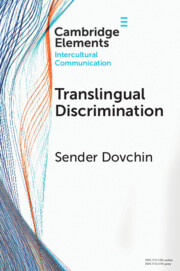Element contents
Translingual Discrimination
Published online by Cambridge University Press: 02 November 2022
Summary
- Type
- Element
- Information
- Online ISBN: 9781009209748Publisher: Cambridge University PressPrint publication: 01 December 2022
References
- 14
- Cited by



